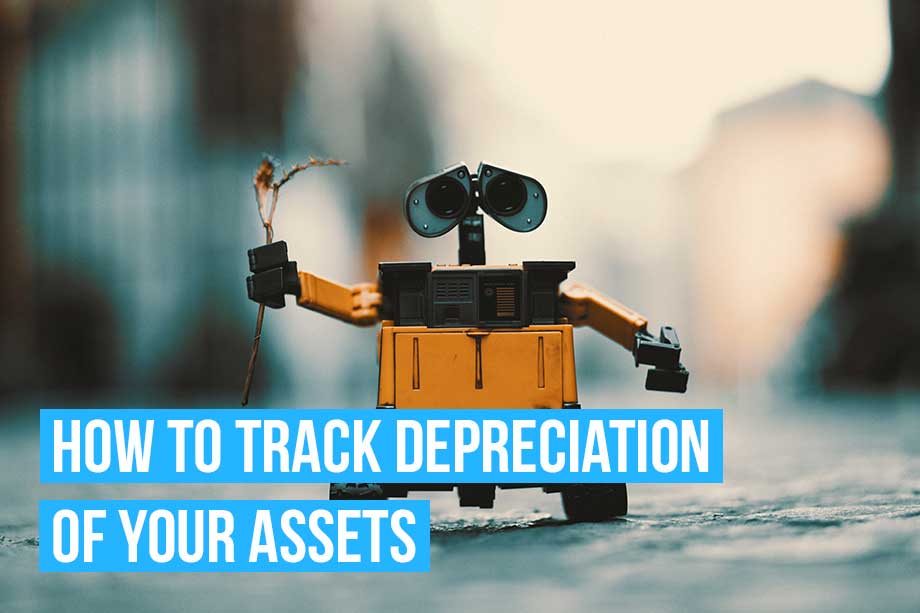Assets, depreciation and amortisation
All companies are composed of short-term (current) and long-term (fixed) assets. Over time, fixed assets like computers, machinery, furniture, etc. lose value. In other words, they experience depreciation or amortisation.
When it comes to asset depreciation or amortisation, what this basically concerns is your expenses as a small business or entrepreneur. And expenses are a pillar of accounting when it comes to running a business.
What is an asset?
From an accounting standpoint, an asset can be a type of product, license or any other resource that a company owns and that contributes to the running of the business, meaning that the company expects to gain future benefits or return from the purchase of said asset.
This could include the computer you work with, a company car, a patent or raw materials. If it contributes to the business and was purchased for a specific purpose in the business, it is an asset.
Two types of assets As mentioned above, there are two types of assets that a company can possess. The categorisation of the asset is based on what the asset actually is, but also the length of time the company expects to use it.
Fixed assets: This type of asset is considered long-lasting. Meaning that you expect it to have a useful life for your business of at least 1 year before converting it to cash. Fixed assets can take many forms, and must be treated with depreciation. These are not purchased with the intention to sell, so they are considered long-term.
Current assets: These assets form part of the cyclical nature of a business. Raw materials, stocks, and generally anything that is purchased with the intention or likelihood of selling within 1 year.

Why assets lose value
Depreciation or amortisation applies only to fixed assets. Current assets are generally not held long enough to encounter noticeable depreciation in their useful life. Fixed assets, on the other hand, can be affected by depreciation. All long-term assets that are affected by this include everything from real estate to machinery to hardware and the loss of value is treated as an expense.
These fixed assets decrease in value for a variety of reasons, the most common being general wear-and-tear encountered in regular usage, but can also be due to a certain technology becoming obsolete or replaced by a more recent, more advanced version. For one or both of these reasons, the long-term assets you purchase will not have the same value after 5 years.
These assets are purchased for an initial investment based on their value, which declines over the period they are used in a business (their useful life), resulting in their residual value - their estimated worth at the time the business decides to sell or dispose of the asset.
Depreciation or amortisation?
While similar, depreciation and amortisation are technically different, however, in accounting terms their purpose is the same. As a general rule, depreciation occurs with tangible fixed assets, while amortisation applies to intangible fixed assets.
As the explanation implies, intangible assets include items that cannot be physically held, such as patents or copyrights, even know-how of an entrepreneur. Tangible applies to the physical objects: mobile phones, equipment etc. Both amortisation and depreciation describe the loss of value experienced by a fixed asset.
How to calculate the depreciation or amortisation of an asset
It’s important to estimate the value of a fixed asset to determine the loss of value over the useful period. A number of factors should be taken into consideration:
The amortisable value, meaning the price of the acquisition or construction of the asset. The estimated useful life of the asset, meaning how long your business will use the asset. The estimated residual value that the asset will have at the end of its useful life.
For example, if you purchase a new van for use in your business for £25,000. You estimate that based on mileage and usage, the van will have a useful life of 7 years and a salvage value of £4,000. To calculate the annual loss of value, you would use the following formula:
Initial value - residual value / useful life = annual rate of depreciation
So in the example, the formula would be: £25,000 - £4,000 / 7 = £3,000 as the annual cost or depreciation of the van as a fixed asset.
The method of depreciation illustrated by this formula is known as straight-line depreciation, meaning that the asset depreciates by the same amount over each year. This is the most common method of depreciation. There are some other, more complex depreciation methods, but in Debitoor, we have opted for simplicity and a straightforward approach to assets by using straight-line depreciation.
Debitoor is invoicing software that is built for freelancers and small businesses. It is designed to be beautiful and easy to use, even for those without any background in invoicing or accounting. Take a free trial today to see just how easy it can be to stay on top of your business.
